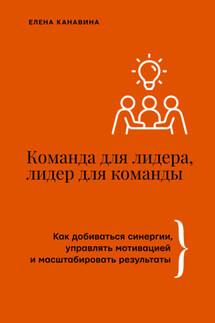Agile Transformation in IT-organizations - страница 8
Inspection makes adaptation possible. Inspection without adaptation is considered meaningless. Scrum events are designed to provoke change.
ADAPTATION: if any aspects of the process go beyond acceptable limits, or if the final product is unacceptable, the process used or materials produced must be adjusted. The adjustment should be made as soon as possible to minimize further deviation. Adaptation becomes more difficult when people involved do not have authority or are not self-governing.
A Scrum Team18 is expected to adapt the moment it learns something new during an inspection.
SCRUM VALUES
The successful use of Scrum depends on how much people share its five values: commitment, focus, openness, respect and courage.
A Scrum Team is committed to their goals and supporting each other. Their most important focus in working at Sprint is the maximum possible progress in achieving goals. The Scrum Team and stakeholders are open to discussing work and challenges. Scrum Team members respect each other as professionals and independent people, and in the same way they are respected by the people they work with. Scrum Team members have the courage to do the right thing and work on solving complex problems. These values set the direction for the work, actions and behavior of the Scrum Team. The decisions taken, the steps taken, and the way Scrum is used should reinforce these values, not weaken or undermine them. Scrum Team members comprehend and discover these values while working with Scrum events and artifacts. When these values are brought to life by Scrum Team members and the people they work with, the empirical pillars of Scrum – transparency, inspection and adaptation – come to life, building trust.
SCRUM ROLES19: TEAM (DEVELOPERS)
The main unit of Scrum is a small team of people, a Scrum Team. A Scrum Team consists of one Scrum Master20, one Product Owner21 and Developers. There are no subcommands or hierarchy inside the Scrum Team. This is a close association of professionals focused on one goal at any time given – Product Goal.
Scrum Teams are cross-functional22, meaning their members have all the skills needed to create value in each Sprint. They are also self-governing, that is, they decide who does what, when and how. A Scrum Team is small enough to stay agile, and large enough to do significant work during a Sprint – usually consists of no more than 10 people. Overall, we found that small teams communicate better and are more productive. If Scrum Teams become too large, participants should consider reorganizing into several cohesive Scrum Teams, each focused the same product. Therefore, they must have the same Product Goal, the same Product Backlog23, the same Product Owner.
A Scrum Team performs all product activities: cooperation with stakeholders, verification, maintenance, operation, experiments, research, development and all that may be required. They are structured and empowered by the organization to manage their own work. Working in Sprints at a steady pace improves the focus and consistency of the Scrum Team.
The whole Scrum Team is responsible for valuable and useful Increment creation in every Sprint. Scrum defines three responsibility zones in the Scrum Team: Developers, Product Owner and Scrum Master.
Developers






